Developing East Asia and Pacific (EAP) is rightly touted as the success story of development. While the much-touted East Asian Miracle seemed to have stalled with the onset of the Asian Financial Crisis 20 years ago, the region rebounded quickly thereafter and regained its status as the world’s fastest-growing developing region. As impressive has been how well it has weathered the global crisis a decade ago. The numbers below tell the story.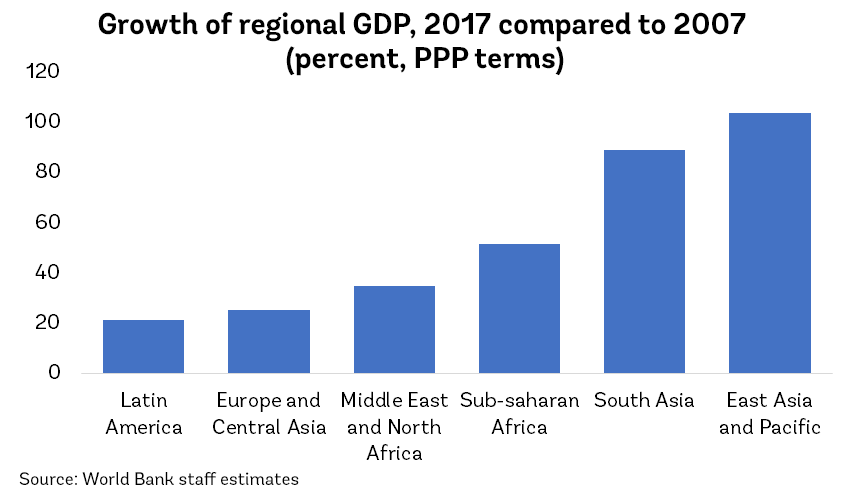
But, for countries as with stocks, past performance doesn’t guarantee future success. So, our latest economic report East Asia and Pacific Economic Update, October 2017, poses three questions:
- What has recent growth across this region looked like and what is the likely economic outlook for the medium term;
- What are the risks to this outlook; and
- How might policymakers in the region address these risks and other challenges going forward?
Our answers are as follows:
- First, growth in the developing economies of EAP accelerated slightly in the first half of 2017, and for the year as a whole is likely to exceed earlier expectations. While domestic demand continues to be the main driver of growth, this improvement is largely a result of favorable global trends. Growing world trade, strengthening recovery in advanced economies, and accelerating growth in emerging market and developing economies are all combining to strengthen external demand, which is particularly important to the fortunes of this outward-oriented region. Also helping are the moderate pace at which commodity prices are recovering and the gradual tightening of advanced economy monetary policies. These favorable conditions are likely to persist and so we expect that, although the Chinese economy will likely slow slightly in 2018-19 to about 6.4%, the rest of region will see stable growth of just above 5%. With these growth prospects, poverty rates will continue to decline—from about 11% in 2016 to under 8% by 2019 (at $3.10-a-day PPP).
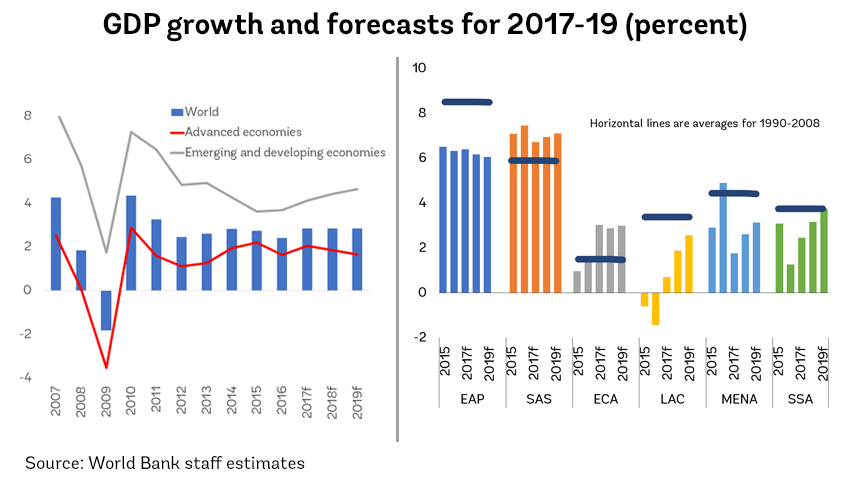
- This positive outlook is clouded by significant risks. Continued uncertainty about economic policies in some advanced economies and the escalation of geopolitical tensions could jeopardize growth prospects by making trade and external financing costlier. Rapidly rising private sector debt in many countries could exacerbated financial vulnerabilities if global financing were to tighten unexpectedly. And with budget deficits remaining high or expected to rise in most countries, including in countries where public debt is high or rising, the policy space for responding to shocks is limited.
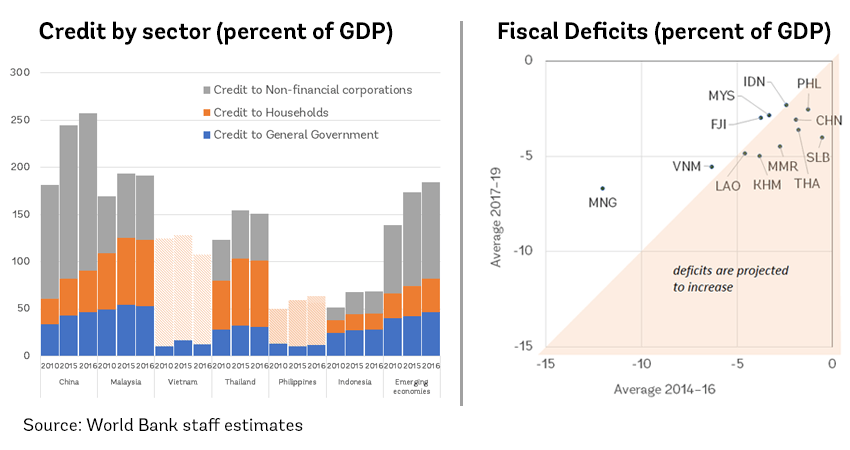
- The main takeaway for policymakers is that the improved global outlook provides them a window of opportunity to reduce vulnerabilities while strengthening the foundations for sustained and inclusive growth over the medium term. This will require balancing the short-term imperative of stimulating growth with the longer-term goal of sustaining inclusive growth. To address vulnerabilities, priorities include strengthening the framework to reduce financial sector risks and continued fiscal prudence. To foster and sustain inclusive growth will require deepening a range of structural reforms, including SOE reforms in some countries and improved public investment management in others that are undertaking ambitious public infrastructure programs. The risk of rising protectionism can be offset by advancing regional integration, including by reducing non-tariff barriers and liberalizing services trade.
The report also highlights the growing concerns in the region about high and rising inequality, falling mobility, and growing economic insecurity. One aspect of this can be seen below. Even as poverty has fallen dramatically and the shares of those at the upper end of the income distribution has risen, the proportion of the region’s population that is vulnerable to falling back into poverty has remained at about a quarter of the population since the turn of the century. Addressing these concerns will require going beyond an exclusive focus on reducing poverty to a broader emphasis on ensuring economic mobility and security for all.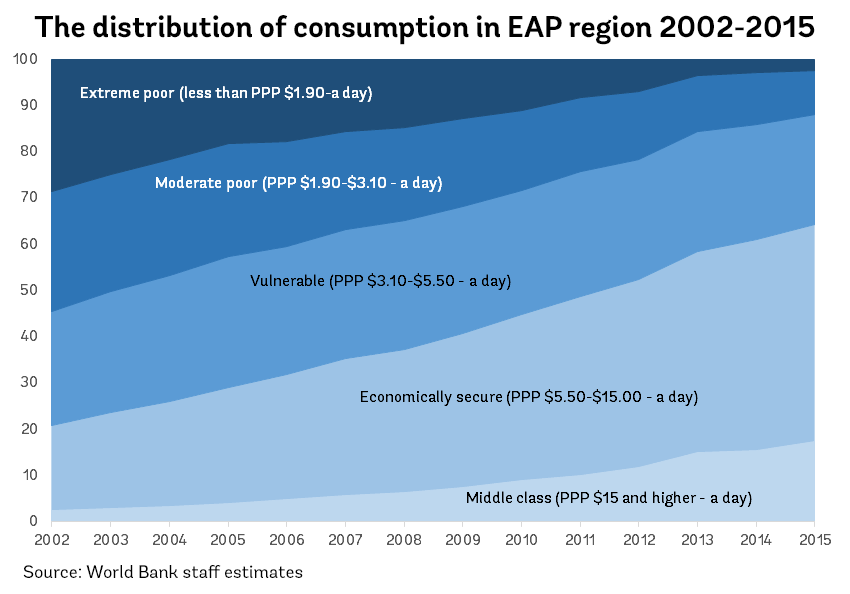
In future blog posts, we’ll be taking a deeper look at specific aspects of the region’s economies. Stay tuned and share your questions or comments with us.
Related:
• Download the full report
• View the key findings and press release


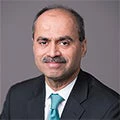


Join the Conversation